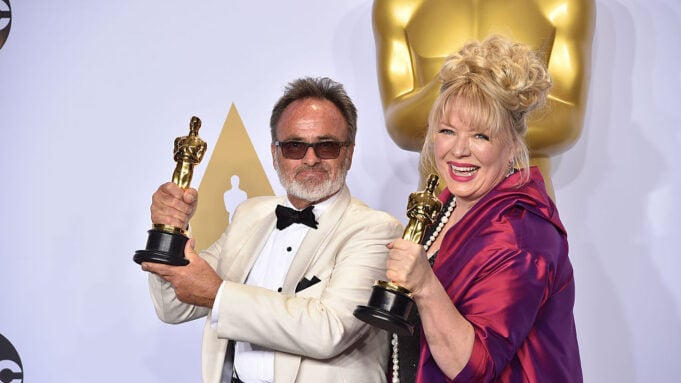Colin Gibson has a long list of credits to his name. Known for his frequent collaborations with Australian director George Miller, the production designer has worked on “Babe” and “Mad Max: Fury Road.” He’s been nominated for BAFTA and AACTA Awards, and won the Academy Award for Best Production Design in 2016.
This is a collection of credits and a career that anyone would be proud of – just don’t use the word “career” around Gibson.
Originally entering the film industry intent on being an actor, he rejects the use of words like “career” or “artist”; instead, he refers to his work as a frantic assembly of odd skills that he’s been fortunate enough to put to good use in some of Australian cinema’s biggest films.
One of these films is none other than the 1994 classic, “The Adventures of Priscilla, Queen of the Desert.”
Gibson joined the production as an art director and with an art department of three, arguably doubled as a part-time engineer, creating makeshift tools and tricks to overcome the fact that none of the actors had a license or interest in driving the film’s iconic bus.
“It didn’t really matter whether I was the props guy or designer,” he says. “I was probably just as loud-mouthed and annoying in whatever the named position was… But at least I wasn’t foisting bad acting on an unsuspecting public!”
Major advances in technology and film practice have emerged since 1994, but Gibson still abides by one rule: great design comes from story first.
He stresses that if you design with no truth and the sole intention to make “something that looks cool,” the film will “end up with a lot of cool wallpaper and nothing really grabbing the audience by the balls.”
This wasn’t an issue for “Furiosa: A Mad Max Saga” and “Fury Road,” both of which luridly depict the Australian desert as an apocalyptic wasteland, inhabited by a plethora of unhinged characters and settlements.
“In the case of ‘Fury Road,’ there was no script,” reveals Colin. “Which meant I had the chance to help write a bible of who the tribes were and where they came from. Once you’ve discussed where people come from, what their motivations are, how they operate, how they do battle, then all of that feeds in.”
“Furiosa” stars Anya Taylor-Joy as the titular character and Chris Hemsworth as Dementus, and is the long-awaited prequel to 2015’s “Fury Road,” for which Gibson won his Academy Award for Best Production Design, despite facing strong competition from the likes of Arthur Max (“The Martian”), Jack Fisk (“The Revenant”).
The jarring age gap between those films was not a new thing for the “Mad Max” franchise, having endured a 30-year hiatus between “Fury Road” and its predecessor, “Beyond Thunderdome.” Within that time, the franchise had multiple false starts and lost its lead, Mel Gibson.
Originally tapped to work on “Beyond Thunderdome,” Gibson had been consumed by the world of “Mad Max” for many years before getting the call that they were finally going to give “Fury Road” another go.
The extra time meant the creative team had explored every detail under a microscope and could “take advantage of everything [they’d] learnt and everything the world [had] come up with.”
“Techniques for filmmaking and shooting have changed as well. [You used to] only have one chance to drive across that virgin piece of wasteland desert, because after that your two props guys are racing out there with brooms and battery-operated blowers hoping they can get rid of the deep tyre marks for the next take,” Gibson says.
“But now you can employ a VFX company to slowly put the sand back into the holes where you’ve driven over them… So you take advantage.”
Despite Gibson embracing new technology, he does so with an element of caution and the personal opinion that CGI and, more recently, the Unreal Engine, can lead to a “pre-digested” approach to filmmaking. Put another way, he worries that the tools have been used to plan and dictate in such detail that it may have consequently suffocated other creative possibilities.
This is why Gibson believes it’s a filmmaker’s job to be truthful and to create an authentic connection with the audience, wherever possible. That if you start removing the stakes or creating without a foundation of truth, the audience feels cheated and the story washes over them without any deeper impact.
“I’m glad those things have been discovered,” he elaborates,” but I think you’ve got to be careful. I think if the CGI replaces physics, or replaces what we know in our hearts to be plausible, real or bearable, it’s hard to get the hair on your neck to stand up because there is nothing at stake. It’s the difference between a snuff movie and a story about killing someone.”
“Furiosa: A Mad Max Saga” is out now.































